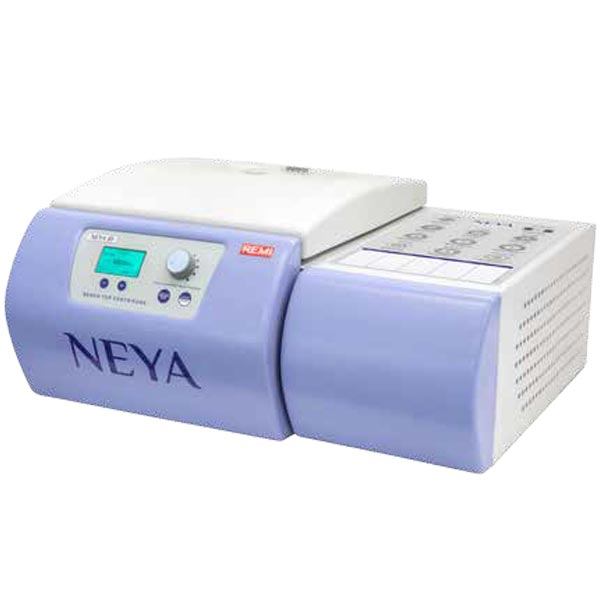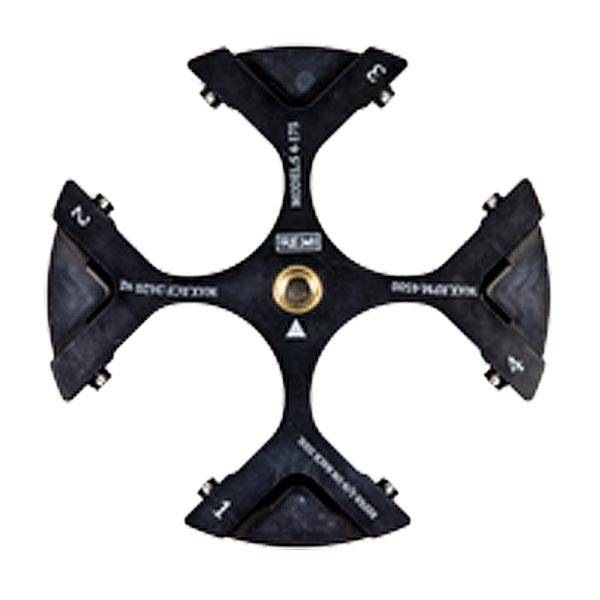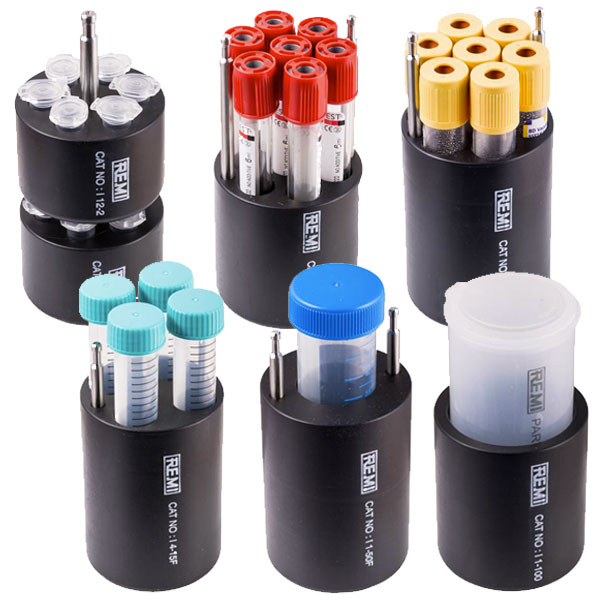Laboratory centrifuges are used in many of the daily operations performed by laboratory technicians. Their use makes it possible to separate two elements of different densities within a solution.
Or to separate a solid component from a liquid component within a viscous fluid.
Centrifugal force
.
The separation of components performed by laboratory centrifuges takes advantage of the properties of centrifugal force. This can also be said of centrifugal acceleration. This is generated by the rotation of the basket inside the instrument.
A rotor is placed inside the centrifuge inside which containers can be housed, which are usually specific test tubes. The centrifuge tubes are chosen according to the shape of the containers they are to hold.
The centrifuge rotor is placed inside the centrifuge.
There are also high-speed models that utilise vacuum rotation to reduce friction with the air. In this way, even more accurate separations can be achieved.
They are also available in high-speed models.
Sedimentation is the process generated by centrifugal force within a solution. The speed of sedimentation is determined by the centrifugal field determined by the ratio between the angular speed of the rotor and the radial distance from the axis of rotation.
The Laboratory Centrifuges
Centrifuges are one of the most important pieces of equipment to be used in technical analysis laboratories, as they enable a so-called centrifugal movement to separate the liquid part from the solid part or elements with different densities to a liquid: very important operations for laboratory technicians who cannot operate without the aid of laboratory centrifuges.
There are many models of laboratory centrifuges, each highly specialised. Each model is designed to perform particular tasks, such as centrifuges for haematocrits, centrifuges for micropipettes or for eppendorf tubes.
The Operation of Laboratory Centrifuges
Laboratory centrifuges work by means of a special movement called centrifugal force. These special tools are composed of a base in which there are housings for the test tubes where the liquid or viscous substance to be separated is placed, these are moved inside the container thanks to a special rotor located at the base, the centrifugal acceleration favours and accelerates the sedimentation process, causing the division of the two elements. The more technologically advanced the machine used, the more precise the division of substances of different densities will be, such as the latest-generation laboratory centrifuges, which, by first operating through the vacuum of the test tubes containing the substances to be divided, then thanks to the force of centrifugal acceleration, are extremely precise.
The different laboratory centrifuges
For sale, there are different models of laboratory centrifuges, some more technologically advanced and therefore precise; others less accurate, for uses where extreme precision and accuracy is not essential. Laboratory centrifuges are generally subdivided into models, based on the size of the test tube that can be inserted into the specific housing. Among the best-selling are the classic haematocrit centrifuges, ideal for technical blood analysis laboratories that do not use state-of-the-art instruments for this type of analysis, as a low centrifugal force is sufficient to break down the different blood components. More specific and accurate are other types of centrifuges, such as micro-pipette centrifuges, which require a higher speed due to the small amount of substance to be analysed placed inside them.
The classic laboratory centrifuges
The most commonly used model of laboratory centrifuge is basically the bench-top laboratory centrifuge, which is quietly used by laboratory technicians and ensures ease of use and precision in the sedimentation of liquids or viscous substances. Their functionality lies in the fact that they can easily perform several analyses in a row, i.e. the amount of work does not deteriorate the ability of the laboratory centrifuge to function. Their centrifugal acceleration force is not exaggerated, in fact they manage to reach six hundred revolutions per minute, an inertia considering the acceleration of other models such as micro-centrifuges or ultra-centrifuges, which represent the most technologically advanced and most precise models. This is precisely the reason for the durability and quality of benchtop centrifuges, which last for years doing their job excellently in analysis laboratories.
The various models of laboratory centrifuges
Technological progress has made it possible to create state-of-the-art centrifuges, which in addition to separating liquids of different densities or viscous substances also allow working with thermolabile substances, for example, by maintaining a constant low temperature inside the laboratory centrifuge, these are the so-called refrigerated centrifuges. Depending on the need for use, there are also continuous-flow centrifuges that allow the liquid part to flow out of the tube and sediment the solid or denser part in a specific container, or very high-speed centrifuges that allow you to work directly on cell separation.
Countertop centrifuges
The most common centrifuges are benchtop centrifuges, used for low-speed clinical applications. They reach a speed of 6000 rpm (revolutions per minute or in Italianrpm). They reach 6000g, which is the unit of measurement that calculates centrifugal force.
They can withstand a high amount of work and are widely used in clinical laboratories.
Other types of centrifuges
We could summarise the other types of centrifuges as follows:
- Microcentrifuges (10,000 g) are capable of rapid acceleration.
- Continuous-flow centrifuges are useful for collecting large volumes of cells. During centrifugation, the particles sediment while the liquid flows through the rotor.
- High-speed centrifuges reach a maximum speed of about 25,000 rpm with a maximum centrifugal force of 89,000 g. They are needed, for example, for cell fractionation.
- Ultracentrifuges(MAX 600,000 g) possess sophisticated vacuum and refrigeration systems and are used to isolate small organelles such as ribosomes and membrane vesicles.
Refrigerated Centrifuges
In addition to the factors described above, there are centrifuges that offer the possibility of working at low temperatures. This is necessary for the separation of thermolabile samples.



















